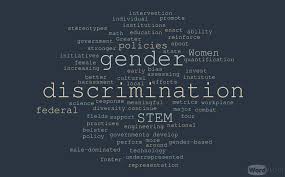In this article, we discussed the meaning of gender discrimination, the examples, the causes, the types, we also talked about the effect and ways to reduce it.
Definition
Gender discrimination is the unfair or unequal treatment of people based on their gender. It can include:
Limiting access to education
Paying lower wages
Being subjected to violence or harassment
Having less freedom to make decisions about personal and family life
Being disadvantaged in society
Being restricted from certain jobs or educational opportunities.
The Examples of Gender Discrimination
Gender discrimination is the unfair treatment of someone based on their gender identity. It can manifest in many ways, including:
Pay: Women make less money than men.
Education: Girls are more likely to be out of school.
Violence: Women and girls are more likely to be murdered by people they know, and experience more sexual violence.
Workplace: Women are sexually harassed at work more often, and are passed over for promotions and raises.
Healthcare: Healthcare professionals take women less seriously.
Credit: Refusing credit to a married woman without her husband’s signature.
Mortgages: Refusing to accept a woman’s salary as the basis for a mortgage because of her sex.
Pregnancy: Discriminating against someone for becoming pregnant, such as firing them or not giving them reasonable accommodations.
Female genital mutilation (FGM): An unnecessary surgery to remove part or all of the genitalia of young females.
Female infanticide: A practice prevalent among rural communities in India, Pakistan, and China.
Lack of legal rights: Women are not given enough legal counsel.
Some causes of gender discrimination include:
Social norms: it is rooted in social norms and power imbalances that favor some over others.
Gender-based violence: such as child marriage, FGM, and sexual violence, contributes to the belief that men and women can be treated differently.
Lack of employment equality: Most economies give women only ¾ the legal work rights of men.
Limited access to education: In some parts of the world, girls may have limited access to education.
Poverty: Poverty can restrict access to education, healthcare, and economic opportunities for women and girls.
There are several types of gender discrimination, including:
Direct discrimination
When someone is openly disadvantaged in the workplace because it. This can include policies, procedures, or criteria that cause unequal outcomes for each sex.
Indirect discrimination
When a rule, policy, or practice disadvantages one is more than the other. For example, an employer requiring all employees to work full-time.
Pregnancy discrimination
When an employer treats an employee unfairly because of their pregnancy, childbirth, or related medical conditions. This can include denying a pregnant employee time off work or reasonable accommodations.
Sexual harassment
When someone engages in unwanted, unwelcome, or offensive conduct that creates an intimidating, hostile, or humiliating work environment.
Hostile sexism
When someone uses sexist language or insults, makes threatening or aggressive comments, or harasses someone for defying gender norms.
Gender discrimination has many effects, including:
Mental health: it can cause low self-esteem, emotional instability, and psychological pressure. It can also make people feel unsafe, which can lead to changes in how they use public spaces.
Physical health: it can harm physical health.
Poverty: it can lead to poverty.
Violence: it can create and reinforce cycles of abuse and violence.
Healthcare: it can restrict access to healthcare.
Education: it can lead to uneven access to education.
Employment: Gender discrimination can lead to lack of employment equality, job segregation, and lower income for women.
Social norms: can limit women’s participation in the global response to climate change.
Representation: can lead to a lack of representation in government.
Here are some ways to reduce gender discrimination:
Recognize gender bias: Learn to recognize and avoid stereotypes, and call out inappropriate comments or behaviors.
Speak up against harassment: Stand up against harassment in the workplace, on the streets, at home, or online.
Support women’s leadership: Find female mentors and leaders, and support women who speak out about gender issues.
Empower women in the workplace: Organize coaching sessions to keep women motivated and productive.
Promote a culture of respect: Create a workplace where all voices are heard and valued.
Offer flexible work arrangements: Provide gender-neutral parental leave policies and flexible work arrangements.
Check your own bias: Many people have internalized gender biases without realizing it. Employers can provide implicit bias training to help with this.
Support equal pay: Voice your support for equal pay for equal work.
Share the workload at home: Share domestic responsibilities to instill the value it in children.
Support organizations that promote it: Find a charity that promotes and donate to it.
Conclusion
Gender discrimination can be caused by sexism y, which is a social phenomenon where people are not treated equally based on it. Gender-inclusive language is a way to avoid discriminating against a particular sex, social gender, The United Nations has created guidelines to help people use gender-inclusive language in their communication.


